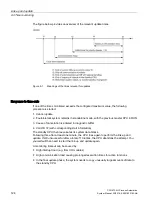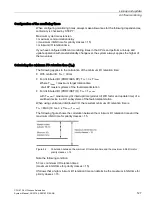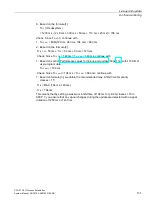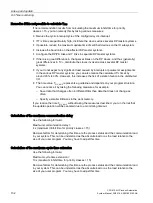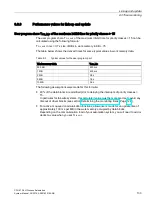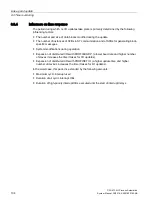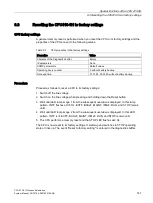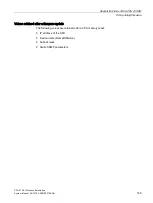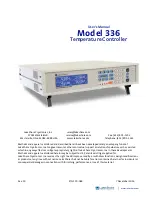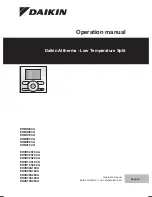
Link-up and update
8.3 Time monitoring
CPU 410-5H Process Automation
132
System Manual, 09/2014, A5E31622160-AB
Remedies if it is not possible to calculate T
P15
If no recommendation results from calculating the maximum inhibit time for priority
classes > 15, you can remedy this by taking various measures:
●
Reduce the cyclic interrupt cycle of the configured cyclic interrupt.
●
If T
TR
times are particularly high, distribute the slaves across several DP master systems.
●
If possible, reduce the maximum update time of switched devices on the IO subsystem.
●
Increase the baud rate on the affected DP master systems.
●
Configure the DP/PA links and Y links in separate DP master systems.
●
If there is a great difference in changeover times on the DP slaves, and thus (generally)
great differences in T
PTO
, distribute the slaves involved across several DP master
systems.
●
If you do not expect any significant load caused by interrupts or parameter assignments
in the various DP master systems, you can also reduce the calculated T
TR
times by
around 20% to 30%. However, this increases the risk of a station failure in the distributed
I/O.
●
The time value T
P15_AWP
represents a guideline and depends on your program structure.
You can reduce it by taking the following measures, for example:
–
Save data that changes often in different DBs than data that does not change as
often.
–
Specify a smaller DB sizes in the work memory.
If you reduce the time T
P15_AWP
without taking the measures described, you run the risk that
the update operation will be canceled due to a monitoring timeout.
Calculation of the maximum communication delay
Use the following formula:
Maximum communication delay =
4 x (maximum inhibit time for priority classes > 15)
Decisive factors for determining this time are the process status and the communication load
in your system. This can be understood as the absolute load or as the load relative to the
size of your user program. You may have to adjust this time.
Calculation of the maximum cycle time extension
Use the following formula:
Maximum cycle time extension =
10 x (maximum inhibit time for priority classes > 15)
Decisive factors for determining this time are the process status and the communication load
in your system. This can be understood as the absolute load or as the load relative to the
size of your user program. You may have to adjust this time.







